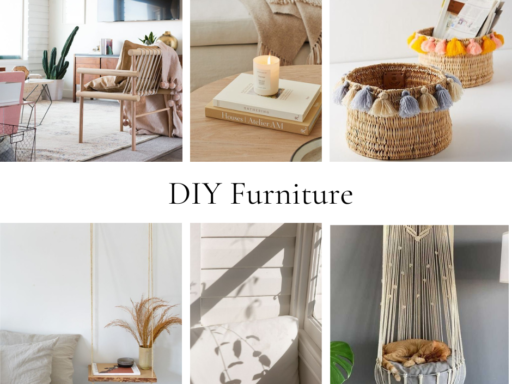Macrame is an engaging and creative DIY craft that allows you to transform simple cords into stunning pieces of art. You can easily create beautiful decor items and accessories with just a few basic knots. This versatility makes macrame appealing for both beginners and seasoned crafters looking to explore new projects.
Starting with macrame requires minimal materials and tools, making it accessible for anyone interested in crafting. You’ll find that a few key techniques can lead to a variety of items, from wall hangings to plant hangers. As you gain confidence and skills, the possibilities expand, allowing for unique and personalized creations.
By embracing DIY macrame, you not only enhance your space but also enjoy the therapeutic benefits of crafting. The process is rewarding and can provide a sense of accomplishment as you see your creations come to life.
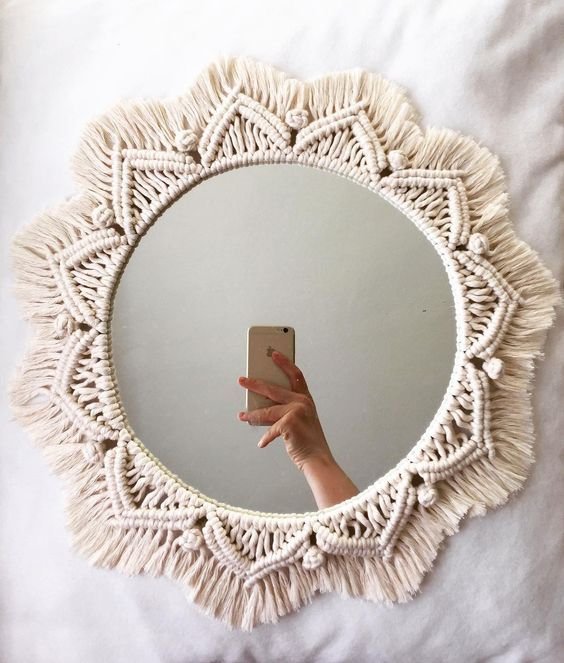

Key Takeaways
- Macrame is a versatile DIY craft suitable for beginners.
- Simple knots can create a range of beautiful decor and accessories.
- Engaging in macrame offers both creativity and therapeutic benefits.
Understanding Macrame
Macrame is a creative form of textile art that involves knotting techniques to create decorative pieces. This craft has a rich history, distinct knots, techniques, and a variety of materials that you can use to start your own macrame projects.
History and Popularity
Macrame dates back to the 13th century, originating with Arabic weavers who used knotting techniques to finish the edges of textiles. It gained prominence during the Victorian era when it became popular in home decor.
Today, macrame enjoys a resurgence, especially in the bohemian design movement. You will find macrame in various forms such as wall hangings, plant hangers, and accessories. Its appeal lies in the ease of creating beautiful designs that can enhance any space.
Essential Knots and Techniques
Mastering basic macrame knots is key to creating intricate patterns. Some fundamental knots include:
- Square Knot: A versatile knot used in various projects.
- Half Hitch: A simple knot that can be used to create a series of knots along a cord.
- Double Half Hitch Knot: Works well for making shapes by repeating the half hitch technique.
Each knot contributes to different macrame patterns, allowing for creativity in your designs. It’s essential to practice these techniques step-by-step as they build your skill and confidence.
Selecting the Right Materials
Choosing the right materials is crucial for your macrame projects. Common options include:
- Macrame Cord: Available in cotton, hemp, or synthetic fibers. Cotton cord is popular for its softness and ease of use.
- 3-Ply Cord: Offers a sturdy structure and is easy to work with, making it suitable for beginners.
- Rope and Yarn: Can add texture and unique elements to your designs.
When selecting materials, consider the desired outcome and durability. Various thicknesses can change the overall look, so experimenting is encouraged.
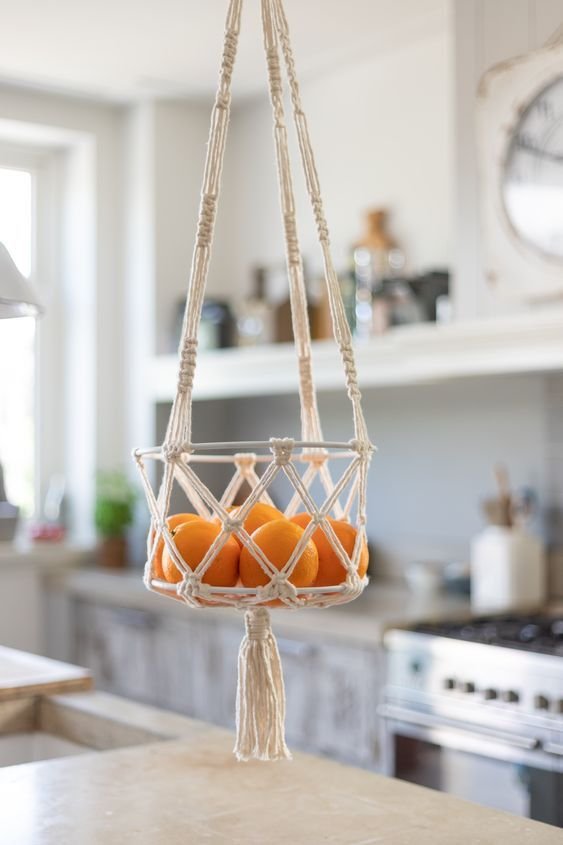

Getting Started with Macrame Projects
Embarking on macrame projects requires understanding the essentials, including supplies and basic techniques. You can find a wealth of free macrame patterns and step-by-step tutorials online tailored to beginners and those looking to enhance their skills.
Basic Macrame Projects for Beginners
Starting with simple projects helps you familiarize yourself with macrame techniques. Recommended items include:
Macrame Plant Hanger: A great first project that combines function and style. Use a measuring tape to cut several lengths of macrame cord to form knots.
Macrame Keychain: Perfect for practicing basic knots. You can use a few short lengths of cord and a keyring for this project.
Macrame Bracelets: These can be as simple or intricate as you like. Start with basic knots and experiment with different patterns.
You can find numerous tutorials online to guide you through each project step-by-step. The key is to practice knotting consistently and confidently.
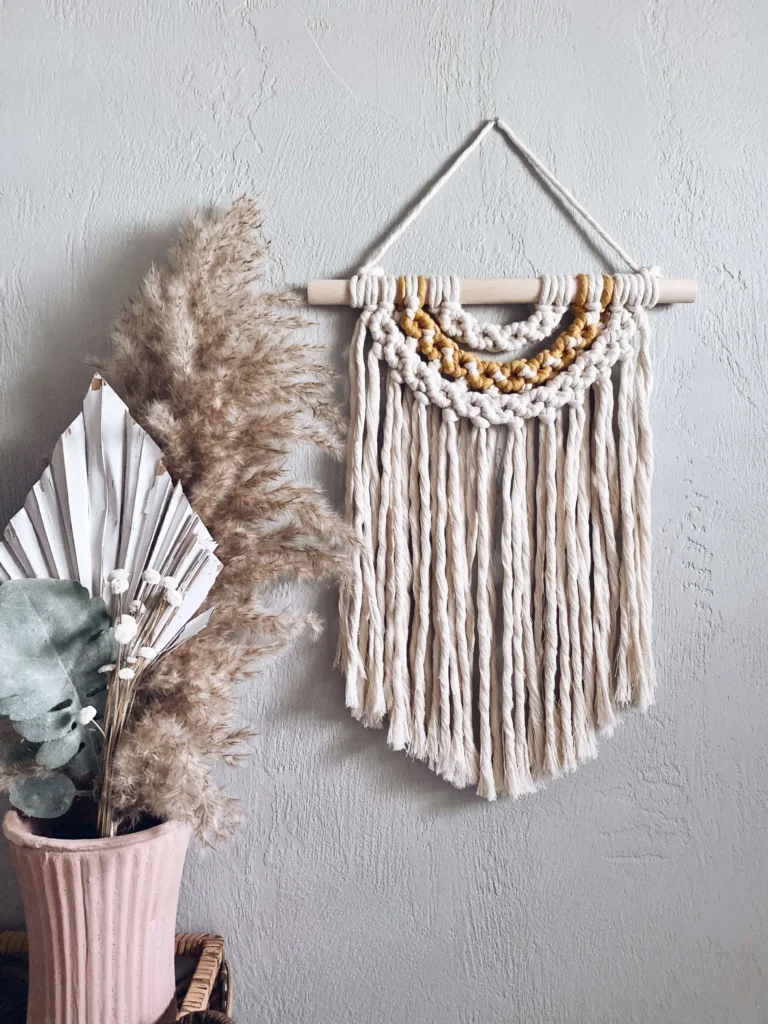
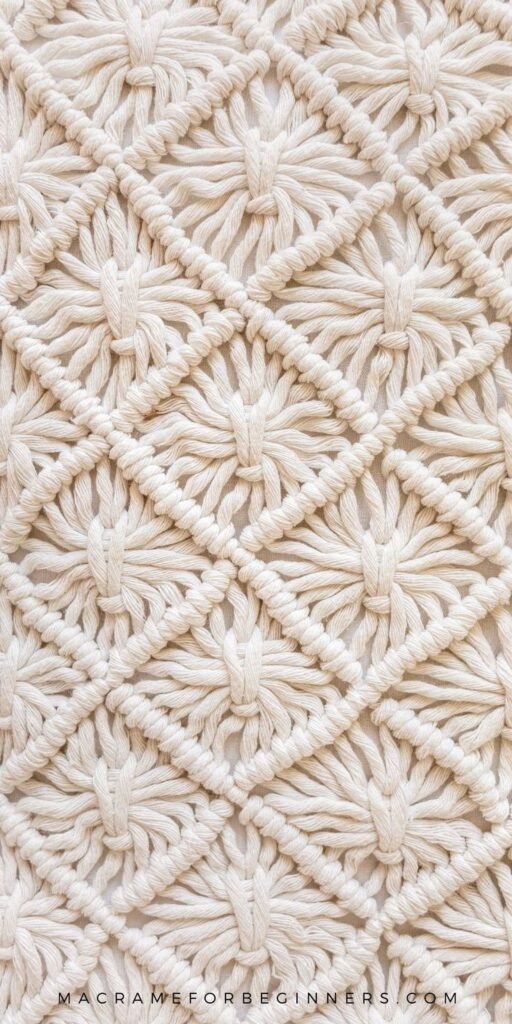
Intermediate Projects to Advance Your Skills
As you become comfortable with basic knots and patterns, try more complex projects to enhance your skills. Consider:
Macrame Wall Hanging: Explore design combinations and unique knots to create beautiful wall art. This project allows for creativity in size and shape.
Macrame Bag: Combining aesthetics with functionality, this project requires precise measuring and knotting techniques to form a sturdy bag.
Macrame Dream Catcher: This project incorporates various knots and embellishments, making it perfect for honing your skills while being creative.
Make sure to have sharp scissors for clean cuts and a tape measure for accurate measurements. Each project offers a chance to experiment with materials and designs while challenging your skills.
Creating Macrame Decor
Macrame decor adds a unique touch to your home, combining creativity with craftsmanship. From wall hangings to plant holders, the possibilities are endless. Here are key concepts to guide your creations.
Designing Your Own Wall Hangings
When designing a macrame wall hanging, choose a theme that complements your space. Popular styles include boho chic, rustic, and modern minimalism. Use free patterns available on platforms like Pinterest to kickstart your design.
Materials:
- Cotton cord or jute for texture
- Wooden dowels for support
- Scissors for finishing touches
Be patient when working through complex patterns. Consider incorporating variations like fringes or beads for added flair. Join Facebook groups focused on macrame for inspiration and tips from other enthusiasts.
Innovative Macrame Plant Hangers
Elevate your plant display with custom macrame plant hangers. Different designs can accommodate various pot sizes while adding style to your greenery. Use strong cord to ensure support for heavier pots.
Key factors to consider:
- Length: Determine how low you want the hanger to hang.
- Knot styles: Experiment with different knots for unique effects, like square knots or lark’s head knots.
You can find numerous design ideas online, ranging from simple to intricate. These hangers can also serve as decorative accents in rooms.
Macrame for Home Accents
Macrame can enhance various home accents, adding a handmade touch. Create functional items like macrame coasters and trivets, which are perfect for protecting surfaces in style.
Consider making a macrame hat hanger for organizing your accessories. It combines utility with aesthetic appeal and can be customized to fit your decor.
For larger projects, like a macrame curtain, opt for thicker cords for sturdiness. This adds a soft texture and visual interest to your windows. Patience is essential for achieving neat and appealing designs, regardless of the project scale.
Accessorizing with Macrame
Macrame offers a versatile way to create personalized accessories that enhance your style. From jewelry to functional items, the possibilities are endless. Incorporating macrame into your accessories not only showcases your creativity but also adds a unique touch to your wardrobe and daily essentials.
Crafting Personal Macrame Jewelry
Creating macrame jewelry is an enjoyable and fulfilling craft. You can make various pieces, including bracelets, necklaces, and earrings. Using a wide range of beads can elevate your designs. Here are some popular items you can create:
- Macrame Bracelets: Layer them for a boho look or make simple friendship bracelets.
- Macrame Earrings: Experiment with different knots and styles to craft stunning statement pieces.
- Macrame Necklaces: Incorporate larger beads or pendants for visual interest.
Choose colors that reflect your personal aesthetic to ensure these accessories perfectly complement your style.
Unique Macrame Accessories
Macrame also extends beyond jewelry into unique everyday items. Functional accessories can be both stylish and practical, allowing you to incorporate your craft into daily life. Consider these options:
- Macrame Camera Strap: A comfortable strap not only provides support but adds flair to your photography adventures.
- Macrame Belt: Craft a stylish belt that cinches your waist while enhancing your outfit.
- Macrame Hat Hanger: Organize your hats while showcasing your macrame skills.
These accessories provide a creative outlet while offering functional benefits, making them a great addition to your collection.

Expanding Your Macrame Skills
To enhance your macrame skills, it’s essential to explore resources that support both learning and community engagement. By tapping into various materials and connecting with fellow enthusiasts, you can elevate your craft effectively.
Resources and Communities for Learning
Engaging with dedicated resources can significantly improve your macrame knowledge. Online platforms like Pinterest and Facebook groups are excellent for discovering creative ideas and tutorials. Join communities such as the Soulful Notions group, where you can share experiences and ask questions.
Consider utilizing video tutorials for visual guidance. These often break down complex patterns into easy-to-follow steps. You might find specific knot techniques like the vertical double half hitch and double half hitch particularly useful. Combining written instructions with visual aids will help reinforce your learning.
Advanced Knotting and Design Techniques
Once you feel confident with the basics, focus on advanced knotting techniques to expand your repertoire. Patterns such as the square knot and spiral knot can add texture and complexity to your projects.
Experiment with combining knots to create unique designs. For example, practice using the double half hitch in different ways to form intricate patterns. Explore more complicated projects that challenge your skills.
Consider taking classes from experienced macrame teachers. They can offer personalized guidance and advanced techniques tailored to your goals. Engaging with others in tutorials or workshops will also foster motivation and enhance your learning experience.
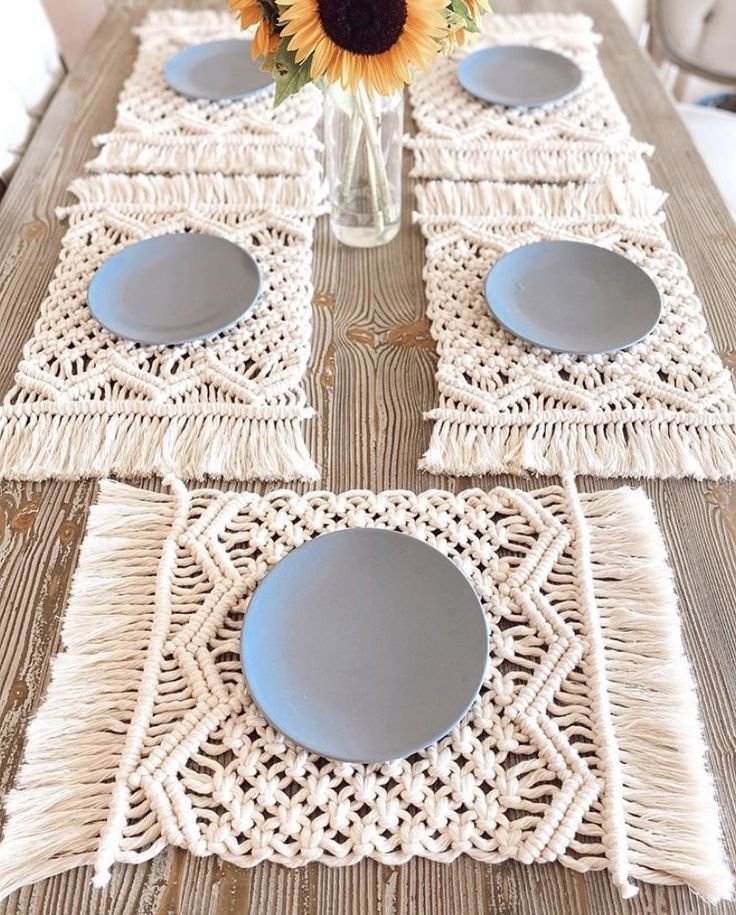
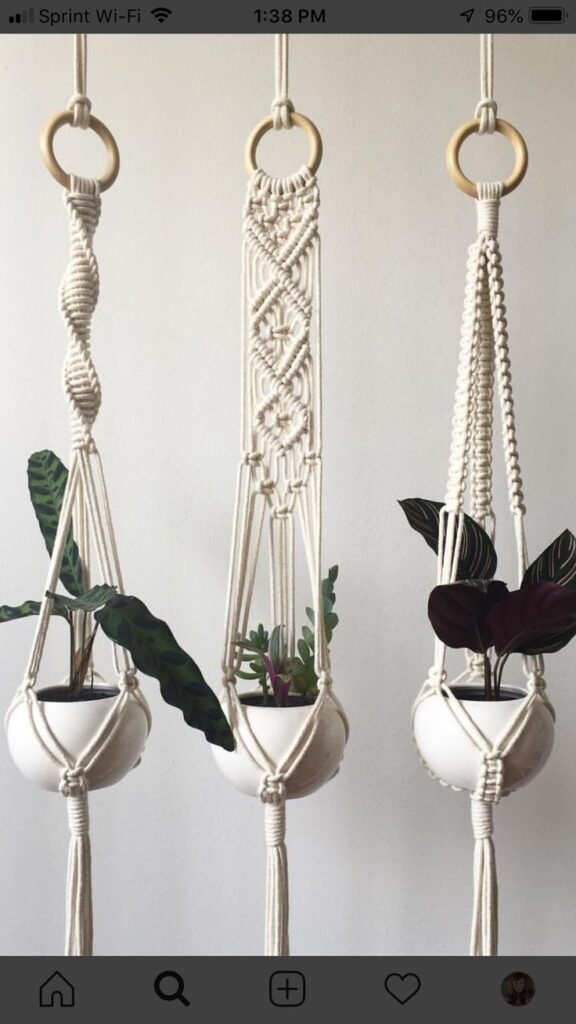
Considerations for Environmentally-Friendly Macrame
Selecting materials and techniques that prioritize sustainability can significantly reduce your environmental impact in macrame. By focusing on using recycled and natural materials, and employing eco-friendly practices, you can create beautiful pieces while being mindful of the Earth’s resources.
Using Recycled and Natural Materials
When choosing materials for your macrame projects, consider using recycled fibers. Recycled cotton is a great option, as it reduces waste and minimizes the use of new resources. This type of material often retains the durability and texture of traditional cotton.
Hemp is another excellent choice. It’s a fast-growing, natural fiber that requires less water and pesticides than cotton. This makes it not only sustainable but also ideal for creating strong macrame pieces.
In addition to these options, look for suppliers who offer eco-friendly materials. You can also incorporate old textiles into your work, giving new life to items that would otherwise be discarded.
Sustainability in Macrame Practices
Implementing sustainable practices in your macrame crafting can further enhance your eco-friendly approach. Start by reducing waste during your creative process. Use precise measurements to minimize leftover materials and plan your projects accordingly.
Consider the longevity of your finished pieces. Craft items that are designed to last, which can be enjoyed for years without the need for replacements. Repairing rather than discarding damaged items contributes to sustainability.
Lastly, be conscious of your impact during the finishing processes. Opt for natural dyes or treatments to avoid harmful chemicals. By focusing on these aspects, you actively contribute to an environmentally-friendly macrame practice.

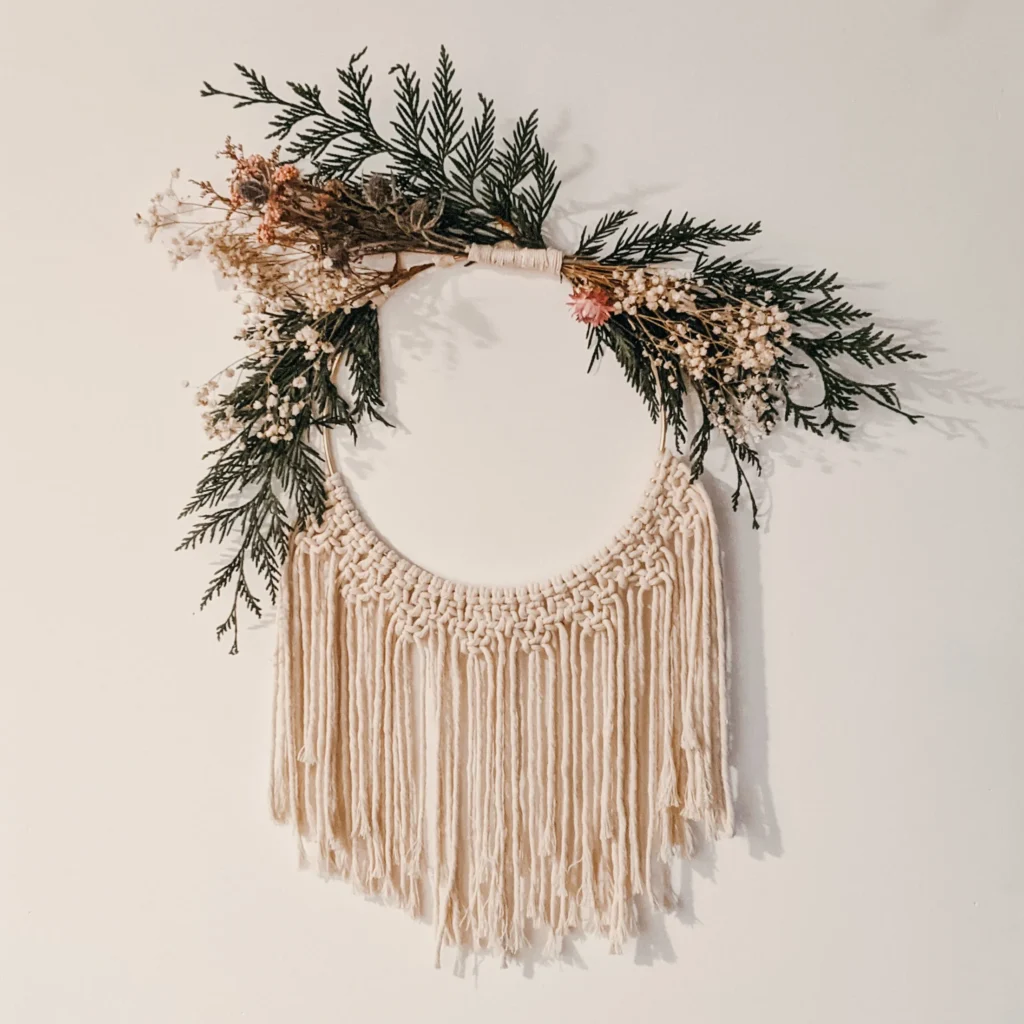
Tips for Success in Macrame
Achieving success in macrame requires effective practice strategies and the ability to troubleshoot common issues you may encounter. With patience and a clear step-by-step approach, you can improve your skills and create beautiful pieces.
Effective Practice Methods
Start by selecting free macrame patterns tailored for beginners. Choose simple designs that allow you to focus on mastering essential knots.
Practice each knot repeatedly before committing to a full project. Breaking your work into manageable sections helps develop fluency in knotting techniques.
Dedicate consistent time each week to practice. Over time, you’ll notice improvements in your speed and confidence. Keeping a notebook to track your progress and jot down tips will aid in your learning process.
Troubleshooting Common Issues
One common issue is uneven tension in your knots. If your project appears lopsided, take a moment to assess your grip and pull on the cords consistently as you knot.
If you find knots slipping or loosening, ensure you’re not tying them too loosely. Review step-by-step instructions for each knot to reinforce your technique.
Another challenge is tangling cords. To avoid this, organize your workspace and use clips or weights to keep cords in place. Taking your time and remaining patient will enhance your enjoyment of the process.




